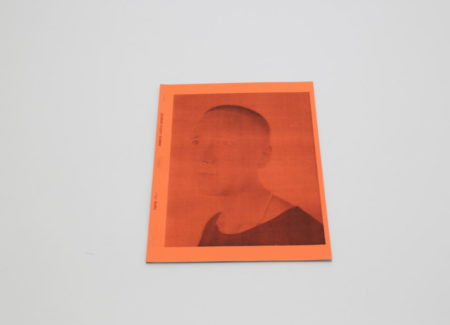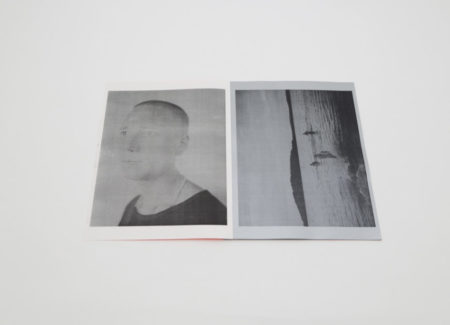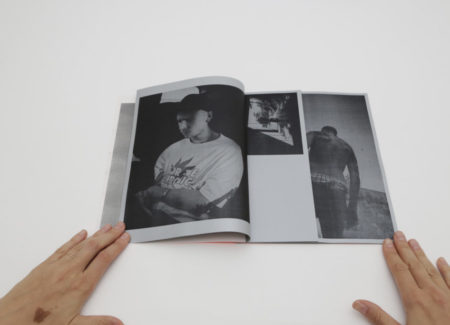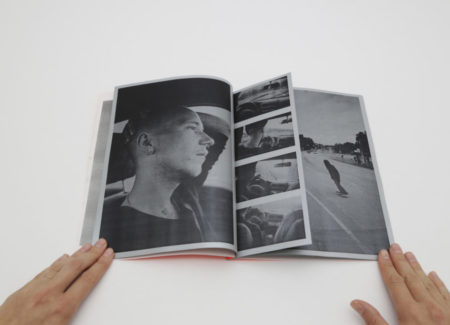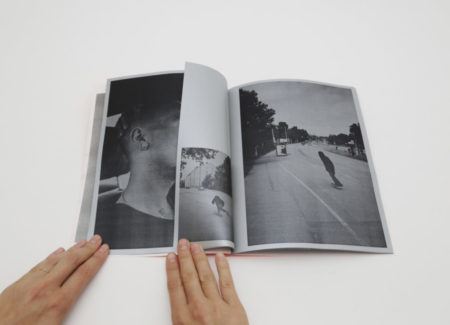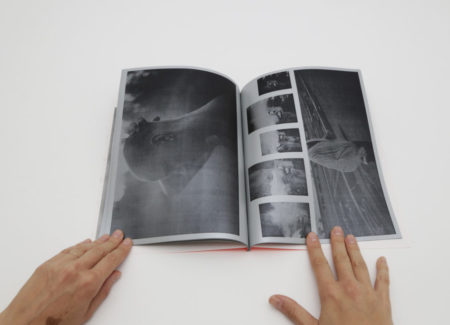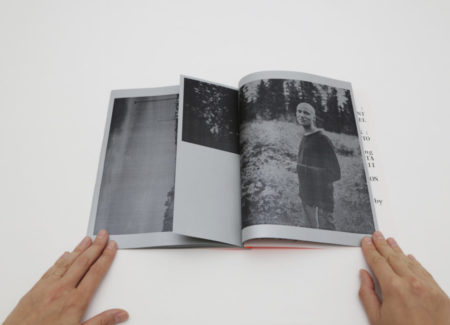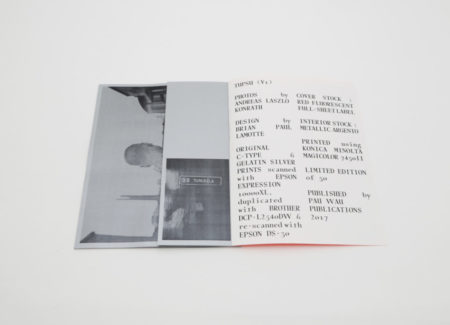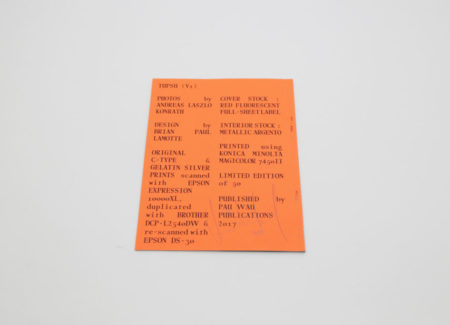JTF (just the facts): Published in 2017 by Pau Wau Publications (publisher site here, no book link available). Softcover, 32 pages, with 40 black and white photographs. There are no texts or essays. In an edition of 50 copies, each signed and numbered. (Cover and spread shots below.)
Comments/Context: The Brooklyn-based publisher Pau Wau Publications is a small independent imprint consciously experimenting with the book format, its physicality, and its form. The innovative publishing house is run by the photographer Andreas Laszlo Konrath and the designer Brian Paul Lamotte, and their publications are usually printed in small editions and often made by hand, produced in close collaboration with artists and with meticulous attention to detail. Among their recent titles are Infinite Power by David Brandon Geeting (reviewed here), the accordion-fold book Nassau Avenue by Daniel Arnold (reviewed here), and the risograph artist book Masks by Luke Barber-Smith, just to name few, and Pau Wau’s Zine Time vending machine installation was featured at MoMA’s Ocean of Images: New Photography 2015 exhibition. With their constant push to try new approaches (in everything from printing techniques and paper texture to binding) and to collaborate with both established and emerging artists, Pau Wau is one of the publishers setting the book making scene in New York, if not beyond.
One of Pau Wau’s most recent publications is entitled Tupsu (V1), with photographs by Konrath and design by Lamotte. The first thing that immediately stands out about this thin photobook is its fluorescent orange/red cover (it is also a sticker), with a nearly full spread head shot portrait in black and white printed over it. Once inside, the stapled pages are filled with black and white images printed on high quality metallic paper. This bold combination of an ultra bright cover matched with shiny silver pages is daring and exciting.
Konrath and Lamotte have eagerly experimented with the physicality of the images and the post-production process here, finding the most fitting combination for this particular project. The original prints were first scanned, then duplicated, then re-scanned and printed again (the colophon on the back cover lists full model details for all the equipment used in the process). This approach ensures that the resulting images have the same aesthetic feel, regardless of whether the originals were in color or black and white, with the distortion caused by the multiple layers of processing adding texture and incremental visual noise. The credit text appears on the back cover in a large font taking up the full spread, ultimately creating a thrilling graphic presence; otherwise there is no typical intrusion of page numbers or captions.
The photographs collected in Tupsu were taken during a period of a few years. The narrative is focused on a young Finnish man (Tupsu is his name), and his portrait appears prominently on the cover. As the narrative unfolds, full bleed photographs with a small border alternate with half cut pages, creating unexpected overlaps and interventions. The images on shorter pages are more dynamic, varying in their size, number, and layout, and bringing a sense of cinematic movement to the visual flow.
Growing up in England, skate culture was a substantial part of Konrath’s life, and it still remains his biggest inspiration. Tupsu represents a composite portrait of the rhythms of that community. Most of the photographs are rather quiet and intimate – various portraits of Tupsu caught deep in his thoughts, friends chatting on stairs between skating sessions, a shot of Tupsu eating, friends jumping in the river.
One spread shows a close up portrait of a young man with his hand behind his head; four small horizontal images on a nearby strip show him from the back as he drives a car. Another selection features a full spread photograph on the right capturing a man skateboarding on an avenue, while the half page in the middle contains a small vertical photo of the same skateboarder at a different location. This kind of stuttering layout creates an exciting back-and-forth flow. An image of person’s spread hands, almost whited out by the flash, and a profile portrait of a man looking down are juxtaposed in another spread; both images are rather dark, while the shorter page in the middle is brighter and features one image on each side. One of the last images shows Tupsu looking straight back at the camera, relaxed and smiling; the forest behind him reinforces the calm atmosphere. While we never get to know much about his life, Tupsu’s personality and character come forth with quiet intimacy.
In the end, Tupsu’s elegant design and risk-taking production create a strong connection between the visual and the physical. The photobook’s overt physicality creates a very personal and tactile experience, while the cinematic visual flow adds rebellious dynamism to the otherwise serene photographs. As the title hints, Tupsu seems to be the first volume in a series, so it will be exciting to see where Konrath and Lamotte take this project next.
Collector’s POV: Andreas Laszlo Konrath does not appear to have gallery representation at this time. As such, interested collectors should likely follow up directly with the artist via his website (linked in the sidebar).
